Someone asked me a question in a PM and I decided to post the answer here as others may be interested.
Many "Multimeters" come with banana jacks that will also accept a "Type K" thermocouple. If you have a thermocouple setting on your multimeter this is a solution you can do at home cheaply. It wont have the triple decimal precision of the instruments I use in my tests, but it will give you a good enough idea of what ballpark you are in.
Any meter and probe will most likely be accurate within 5 degrees or so, even on a cheap meter. Your biggest margin of error will come from whatever technique you use to position the probe. Positioning is crucial to getting a good measurement.
Of course it will be up to you to figure out how to get just the tip of the thermocouple under (and touching) a center wrap of your coil and then reassemble it to vape and measure, as every atty is different. Remember, the wraps at the ends of the coil are a significantly lower temp, you want to hit a center wrap. Also, you dont want the thermocouple to "short" (touch) two wraps together, it will change the resistance on your build (possibly even create a hot leg) and give you a worthless measurement.
Position the probe well and you will have a pretty damn close idea of what temp you are vaping at. Try different spots and methods, then go with the placement that yielded the highest temperature. After all, what you are looking for is the max temp.
Notice how just the metal tip of the probe is under the wrap, also notice the metal probe tip is not touching two wraps.

Some of the newer cartridges (like the baby beast) are almost impossible to measure as they have 2 parallel (dual) coils and they are spaced so closely it is very difficult to just touch just one of the coil wraps. If you touch two wires you short the two coils together with the metal on the probe and throw off the whole measurement, and most likely create a hot leg. If you see ridiculously high temps on a saturated wick, look for a short caused by the probe.

Examples of meters that can be used for this, just make sure it has a Temperature or "Type K" Thermocouple (sometimes it just says temp) setting. If you own a multimeter, chances are 50/50 your meter already supports Type K thermocouples.

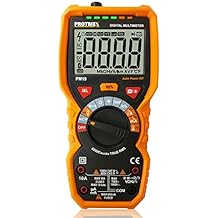
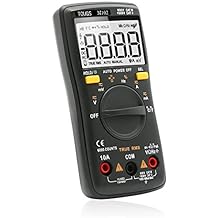
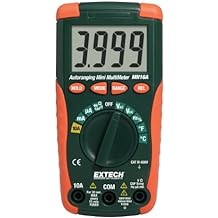
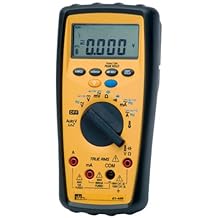
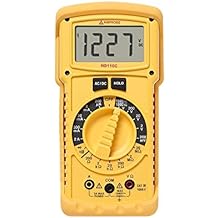
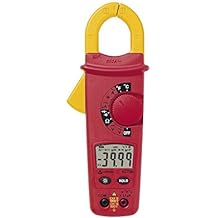
If you dont have a multimeter, you can get one for only $20:
https://www.amazon.com/Extech-MN35-...keywords=multimeters+with+type+k+thermocouple

This is the adapter you want to adapt the meter banana jacks to "Type K Mini thermocouples", the black jack (minus) goes in the COM jack on the meter., and in this case the red (plus) jack would go on the TEMP side, however this can differ from meter to meter so read your meter manual if in doubt.

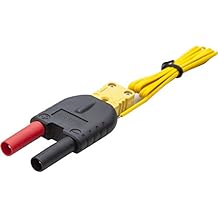
It comes with a probe, but the black adapter also adapts your banana plugs on the meter to ANY "mini" (aka Subminiature) thermocouple connector.
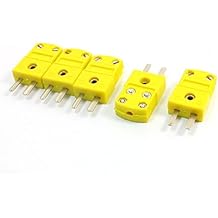
A thermocouple wire comes with the adapter but it might be too thick and I dont know what temp the insulation can handle. If desired, you can order smaller ones from the "Omega" links below. Consider getting the kind with the mini connectors already on them, or else you also need to buy the mini connectors and assemble them yourself.
Make sure you get the "Type K" thermocouples, and the finer the gauge the faster the response time.
I recommend selecting the Kapton or PFA insulation as the glass braid insulation starts coming unraveled as soon as the juice hits it. The Kapton or PFA have a 500°F limit, if you go much above that you will fry the probe. The glass braid has a much higher 900°F limit but I never found it to be practical (even though I really wanted to and tried hard) because the braid comes unraveled as soon as it gets wet. The glass braid is a "one shot" deal, you get one shot and then the probe is shot.
Links with "mini" connectors already attached (easier):
Thermocouples | Insulated Thermocouples with Connectors | Types J, K, T and E
You want the ones with a part # starting with "5S" as that is the mini connector. The "5L" is a larger connector and wont fit.

Link without connectors (cheaper but you have to buy the connectors and assemble yourself):
Glass braided & PFA Insulated Thermocouples

You will need these Type K "mini" connectors if you buy the wires without connectors:
https://www.amazon.com/Thermocouple...09818047&sr=8-5&keywords=thermocouple+adapter

Many "Multimeters" come with banana jacks that will also accept a "Type K" thermocouple. If you have a thermocouple setting on your multimeter this is a solution you can do at home cheaply. It wont have the triple decimal precision of the instruments I use in my tests, but it will give you a good enough idea of what ballpark you are in.
Any meter and probe will most likely be accurate within 5 degrees or so, even on a cheap meter. Your biggest margin of error will come from whatever technique you use to position the probe. Positioning is crucial to getting a good measurement.
Of course it will be up to you to figure out how to get just the tip of the thermocouple under (and touching) a center wrap of your coil and then reassemble it to vape and measure, as every atty is different. Remember, the wraps at the ends of the coil are a significantly lower temp, you want to hit a center wrap. Also, you dont want the thermocouple to "short" (touch) two wraps together, it will change the resistance on your build (possibly even create a hot leg) and give you a worthless measurement.
Position the probe well and you will have a pretty damn close idea of what temp you are vaping at. Try different spots and methods, then go with the placement that yielded the highest temperature. After all, what you are looking for is the max temp.
Notice how just the metal tip of the probe is under the wrap, also notice the metal probe tip is not touching two wraps.
Some of the newer cartridges (like the baby beast) are almost impossible to measure as they have 2 parallel (dual) coils and they are spaced so closely it is very difficult to just touch just one of the coil wraps. If you touch two wires you short the two coils together with the metal on the probe and throw off the whole measurement, and most likely create a hot leg. If you see ridiculously high temps on a saturated wick, look for a short caused by the probe.
Examples of meters that can be used for this, just make sure it has a Temperature or "Type K" Thermocouple (sometimes it just says temp) setting. If you own a multimeter, chances are 50/50 your meter already supports Type K thermocouples.







If you dont have a multimeter, you can get one for only $20:
https://www.amazon.com/Extech-MN35-...keywords=multimeters+with+type+k+thermocouple
This is the adapter you want to adapt the meter banana jacks to "Type K Mini thermocouples", the black jack (minus) goes in the COM jack on the meter., and in this case the red (plus) jack would go on the TEMP side, however this can differ from meter to meter so read your meter manual if in doubt.

It comes with a probe, but the black adapter also adapts your banana plugs on the meter to ANY "mini" (aka Subminiature) thermocouple connector.

A thermocouple wire comes with the adapter but it might be too thick and I dont know what temp the insulation can handle. If desired, you can order smaller ones from the "Omega" links below. Consider getting the kind with the mini connectors already on them, or else you also need to buy the mini connectors and assemble them yourself.
Make sure you get the "Type K" thermocouples, and the finer the gauge the faster the response time.
I recommend selecting the Kapton or PFA insulation as the glass braid insulation starts coming unraveled as soon as the juice hits it. The Kapton or PFA have a 500°F limit, if you go much above that you will fry the probe. The glass braid has a much higher 900°F limit but I never found it to be practical (even though I really wanted to and tried hard) because the braid comes unraveled as soon as it gets wet. The glass braid is a "one shot" deal, you get one shot and then the probe is shot.
Links with "mini" connectors already attached (easier):
Thermocouples | Insulated Thermocouples with Connectors | Types J, K, T and E
You want the ones with a part # starting with "5S" as that is the mini connector. The "5L" is a larger connector and wont fit.
Link without connectors (cheaper but you have to buy the connectors and assemble yourself):
Glass braided & PFA Insulated Thermocouples

You will need these Type K "mini" connectors if you buy the wires without connectors:
https://www.amazon.com/Thermocouple...09818047&sr=8-5&keywords=thermocouple+adapter





